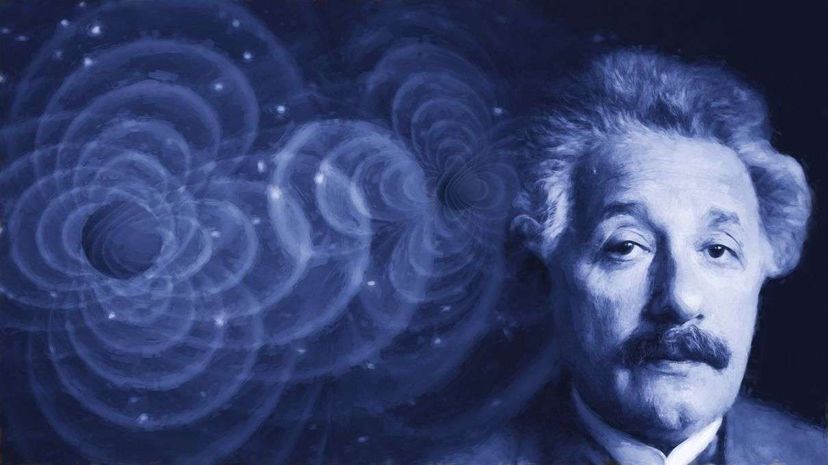
It was just a faint noise, the fleeting remnant of a massively violent event that happened a long time ago in a place very, very far away. But it was enough to confirm one of the major predictions made by Albert Einstein in his theory of general relativity back in 1915. Indeed, it verified the existence of something called gravitational waves — basically, ripples in the fabric of space-time, caused by the acceleration of really massive objects such as black holes.
In a press conference, scientists from the Laser Interferometer Gravitational-Wave Observatory, a consortium that's been searching for gravitational waves since the 2000s, announced that the phenomenon finally had been detected by LIGO's twin detectors in Livingston, Louisiana, and Hanford, Washington.
Advertisement
The waves in question were produced in a fraction of a second that occurred 1.3 billion years ago, when two enormous black holes collided and merged into a single entity. The event converted part of the black holes' mass to energy in the form of some serious gravitational waves. Those waves made the signal — described as a "chirp" — that the LIGO scientists detected.
That cataclysmic merger had a power output about 50 times that of the entire visible universe, according to a press release from LIGO, which combines the efforts of more than 1,000 scientists. The organization is operated by California Institute of Technology and Massachusetts Institute of Technology, and funded by the National Science Foundation, among others.
"We have detected gravitational waves," LIGO executive director David Reitze told reporters. "We did it!"
As Einstein theorized back in the early 1900s, space and time essentially are a single entity, space-time, which you can imagine as being like a tablecloth. When big objects, such as black holes, accelerate in space-time, they essentially cause ripples in the fabric, which are gravitational waves. When converted to sound, the waves make a strange chirp, which you can hear by clicking the link.
The event also marked the first time that scientists actually had observed the merger of two black holes.
"These wave forms give you an enormous amount of information," Reitze said.
The discovery, which was detailed in a scientific paper published today in the journal Physical Review Letters, created a worldwide sensation. So many people clamored for more information that LIGO's website slowed to a crawl. The webcast of the news conference drew nearly 100,000 viewers.
The find was a measure of vindication both for Einstein and the government-funded effort to find gravitational waves, which reportedly has cost at least $620 million. LIGO's twin detectors are designed to detect gravitational waves when they reach Earth.
As this 2015 Nature article explains, at each facility, a laser beam is split to travel down two perpendicular tunnels, each of them about 2.5 miles (4 kilometers) in length, and then bounce off mirrors at the end and back to the source, where they interfere with each other. When a gravitational wave occurs, the tunnels deform slightly, and the distance that the beams travel changes so that they no longer match. That produces a signal that can be measured by equipment.
Between 2010 and 2015, LIGO's detectors were overhauled to make them more sensitive, at a cost of $200 million. It was the new system, called Advanced LIGO, that finally detected the faint signal from distance space.
Caltech scientist and LIGO co-founder Kip Thorne said that Advanced LIGO is still only working at one-third of its design sensitivity, and that as the equipment is fine-tuned, scientists will detect "a huge richness of gravitational wave signals." He predicted that "we ought to see more over the coming year."
Scientists are planning to use other detectors in different locations around Earth — including one under development in Japan, and another that's been proposed in India — to expand the search for gravitational waves and better pinpoint their location, the scientific journal Nature reported.
The latest discovery builds upon the work of Princeton University scientists Russell A. Hulse and Joseph H. Taylor Jr., winners of the 1993 Nobel Prize in physics, who observed slight changes in the orbit of a binary pulsar that indirectly demonstrated the effect of gravitational waves, without observing them. Now, it seems likely that the LIGO scientists, who actually have identified and recorded gravitational waves, will win a Nobel as well.
Advertisement

